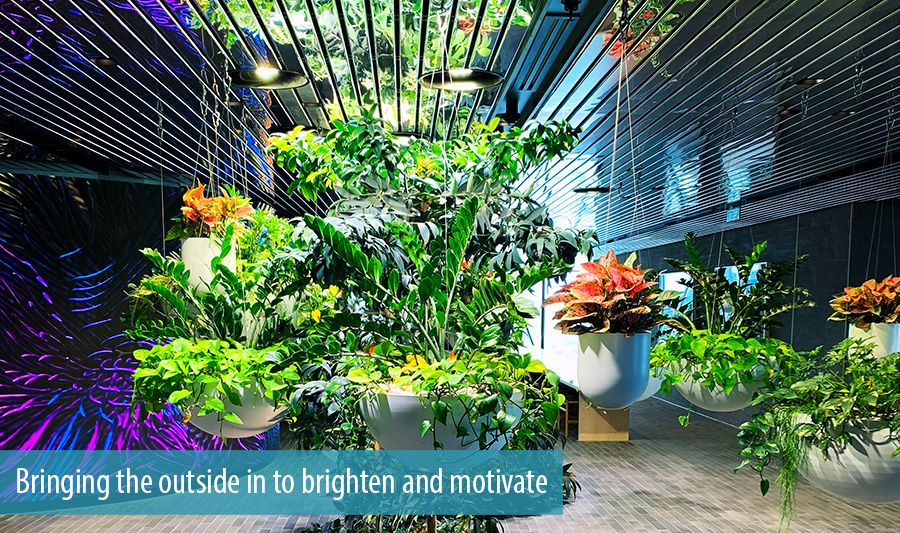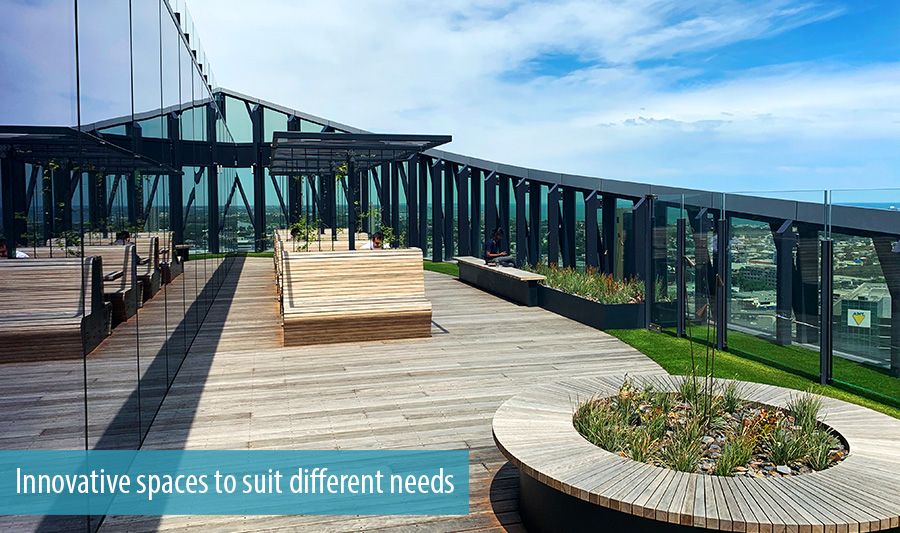
How office design and fit-out can strengthen business culture

This is what many of Australia’s best workplaces are achieving with their office design, along with efficient use of space and technology. So how are traditional government office spaces evolving in comparison? With countless national office fit-out projects over almost two decades, Stephen Oxford from Synergy Group has watched the evolution firsthand.
The office of the past
“I remember having to shuffle sideways down corridors that weren’t wide enough,” recalls Stephen. “In many offices there were power cables duct-taped to the carpet in the meeting rooms! You could see evidence everywhere of spaces being manipulated to respond to a change in need, often without regard to basic things like access and safety.”
In many situations, design features – chosen by architects to address a need – have been removed from plans as part of ‘value management’. The result? Staff lamenting an absence of colour and the consistent use of ‘government grey.’

The times are changing
Thankfully, Stephen believes the tide is turning. “Today we are seeing more adventurous decisions, and I think a growing appreciation that the role an office plays is broader than just providing the tools and spaces your staff need to deliver their work,” explains Stephen. “It’s also a space people want to experience, to draw people together, and attract and retain staff.”
Recently, Synergy Group took a team of government clients through industry-leading fit-outs in Melbourne including Transurban, Energy Australia, Medibank and NAB. “There was nothing in these corporate headquarters that we couldn’t see working in the offices of our government clients,” says Stephen.
“The spaces were designed to maximise natural light, and they felt dynamic with different work settings that could be adapted quickly by users. We witnessed teams coming together over lunch or coffee in the popular informal meeting spaces. There was a real community feel about all these offices.”
Reflecting your culture
A representation and embodiment of organisational culture into a fit-out design was particularly apparent at both Medibank and Transurban. Medibank incorporated an edible garden, a basketball court and an internal course for walking meetings to align with the company’s ‘Live Better’ philosophy.
At Transurban, a full wall displaying a live feed of the company’s various road projects was on display, furthering a real sense of pride in the company’s achievements.
“We have seen this in a few fit-outs recently, especially in the larger corporate headquarters in Sydney and Melbourne. Transurban in Melbourne, and Lendlease in Sydney, have both displayed their work particularly well. By standing in their foyers you can see the projects they have worked on, the history of the company, as well as their company values, all at a glance. It’s really powerful the way they have this on display,” Stephen reflects.
The need for flexibility
The shift from traditional working environments to flexible or modern workspaces is gaining momentum in government, with several entities in the pilot stage of their transition. These pilots are breaking the myth that government workers have unique roles that don’t align with these modern work environments.

The Department of Prime Minister and Cabinet and IP Australia Canberra offices are good examples of successful modern workspaces being implemented in the Commonwealth. The Department of Health is shifting from traditional work settings as they rollout their ‘New Ways of Working’ program nationally. The Department of Defence and the Australian Taxation Office are both in various stages of implementation.
“I think what has been proven incorrect is the assumption that public servants deliver static work in a fixed environment,” explains Stephen. “Having spent the last decade working within government entities, I know this isn’t the case, with a variety of work settings needed to best support public servants to deliver their roles. This is especially true as mobile devices replace fixed desktops, files are accessible via the Cloud, and entities move away from paper use.”
Efficiency now and into the future
Good design plus the application of tools like utilisation software can add greater efficiencies and support workers in these spaces.
“The best example of an efficient office building we recently saw was the Commonwealth Bank of Australia (CBA) in Sydney,” says Stephen. “I couldn’t help but compare their office to the many government buildings I have spent time in. CBA accommodates 3,000 people in a space which would typically accommodate 1,000 public sector workers. I thought the space would feel crowded, but instead it was vibrant and alive, with many places for us to sit down and work.”
These experiences demonstrate a need to consider more than time and budget for your next office fit-out. “We explore leading property practices from the private sector, as well as other jurisdictions, and apply these experiences to our government clients,” explains Stephen. “We see great opportunities in doing this, not just for efficiencies and savings, but also to improve the quality of the property and staff wellbeing outcomes for our clients.”
Synergy Group is a consulting firm focused on government entities. The firm’s dedicated Property Advisory practice brings together unrivalled knowledge of Commonwealth property management with commercial expertise and market experience. See the company profile of Synergy Group for more information.
